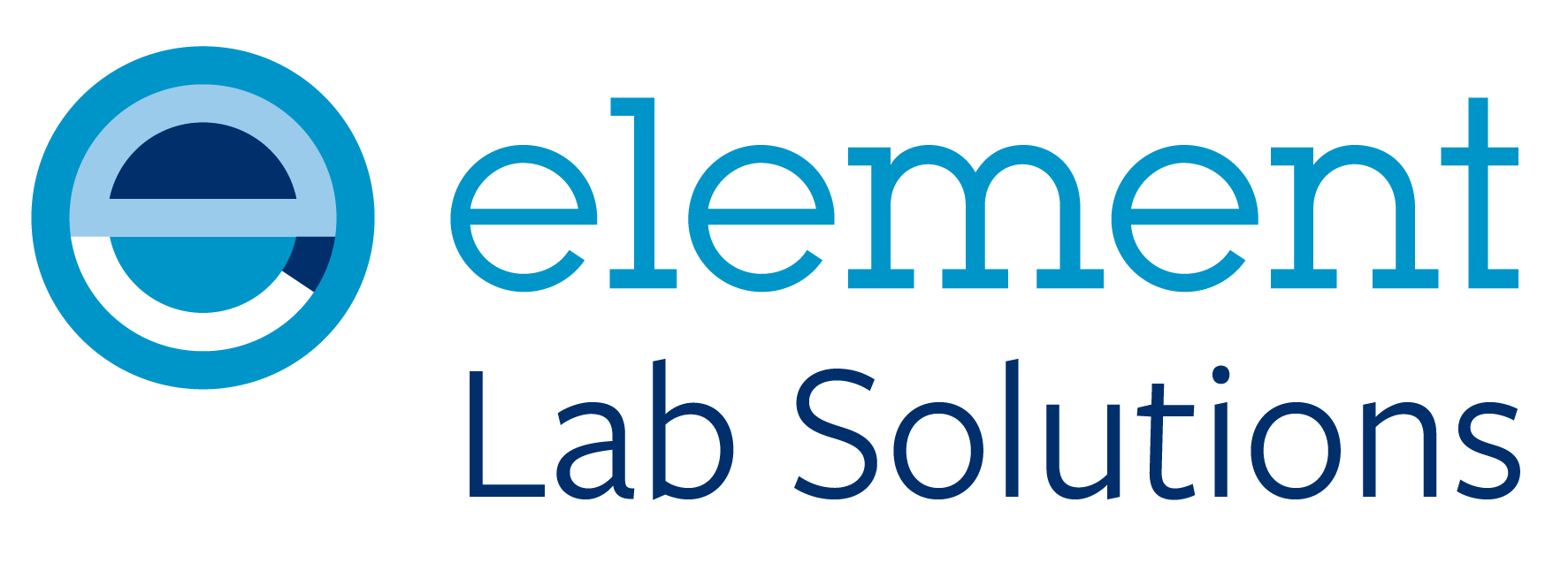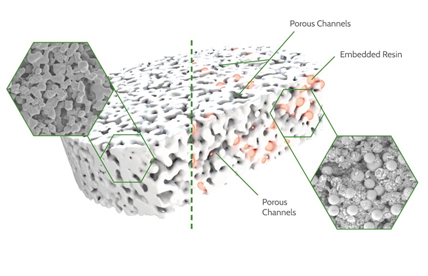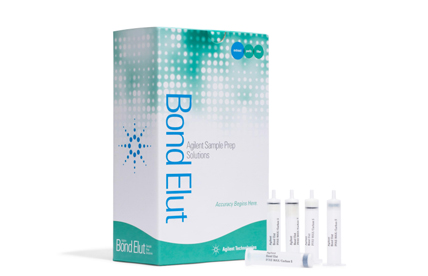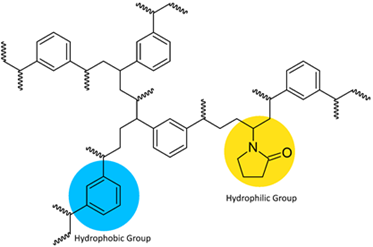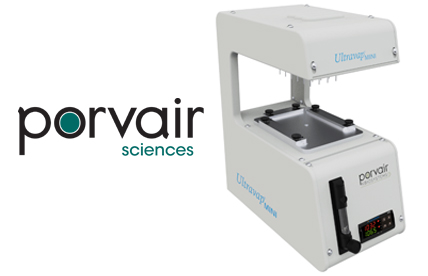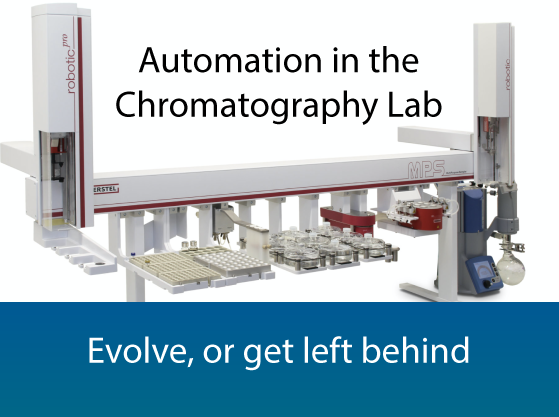Whilst EPA method 1633 specifies the use of weak anion exchange (WAX) solid phase extraction cartridges with subsequent clean-up using carbon (graphitic carbon black has been widely used), Section 12.2.3 contains the following note;
The use of two stacked SPE cartridges, the first containing the WAX sorbent and the second containing activated carbon, or other cartridge configurations may be employed in place of the use of the loose carbon described above.
These ‘stacked’ cartridges have become popular as they reduce sample preparation time, save money, can improve analytical performance and are amenable to automation. As EPA Method 1633 is a performance-based method, the ability to demonstrated ongoing performance of the analysis against specified criteria is required to justify a change from the 2-step approach listed in the method. However, the stacked or layered SPE cartridge approach has become a very popular and successful approach with many analytical testing laboratories.
Agilent Technologies have recently introduced a comprehensive range of BondEult stacked cartridges for all matrices specified within EPA method 1633 including various sorbent loads (ratios) as well as a blended phase which offers some tangible benefits to the end user. The cartridges contain a weak anion exchange (WAX) phase as well as Carbon S sorbent, an advanced hybrid carbon material with optimized carbon content and pore structure which enables better recoveries and relative standard deviations (RSDs) of planar pesticides compared to graphitized carbon black (GCB). The weak anion exchange resin functions as a mixed-mode sorbent, with a combination of ion exchange retention from the diamino WAX ligand, and hydrophobic retention from the polystyrene divinylbenzene substrate. Ion exchange is the dominant retention mechanism for the shorter‑chain hydrophilic carboxylic acids (<C8) and sulfonic acids (<C6). As alkyl chain length increases, the contribution from hydrophobic interaction on retention increases. For neutral PFAS without acidic functional groups (such as the sulfonamides, sulfonamide ethanols and fluorotelomer alcohols), retention is dependent on hydrophobic interactions alone.


Figure 1: Range of stacked (layered) and blended BondElut SPE sorbents from Agilent Technologies available to improve throughput and cost effectiveness in PFAS analysis using EPA1633 and EPA1633-like PFAS analytical protocols.
Choosing the correct product for your analysis is important to fully realise the potential of these stacked and blended cartridges and Table 1 gives more detail on the applicability of each of the products for various analytical outcomes and matrix types.


Table 1: Stacked and blended BondEult SPE cartridge formats and their applicability to various matrices for EPA 1633 and !633-like analyses.
The range of products in the new BondEult PFAS extraction SPE range allow all samples outlined in EPA Method 1633 to be successfully extracted. WAX on top phases are used for aqueous samples and Carbon on top phases are used for solid samples, including tissue samples.
The new blended phases, a homogenised mixture of the two sorbents within a single bed, offer several advantages, primary amongst these are the use of only two frits within the column body, reducing manufacturing complexity and therefore cost, as well as reducing any potential for PFAS contamination from the frits themselves. The 200/50 blended cartridge format is appliable to all sample types with EPA 1633 and is therefore the most versatile format in the range.
A further advantage of the blended phases are the flow characteristics of these products (Figure 2), which present a much lower resistance to flow, are less prone to clogging and allow higher throughput.


Figure 2: Flow characteristics of various Agilent BondElut and competitor SPE sorbent formats for EPA1633 PFAS Analysis.
Figure 2 shows the relatively fast flow characteristics of the blended phase which has flow characteristics approaching that of the standard WAX (non-blended) product. The 200/50 mg stacked cartridge has more resistance to flow, possibly due to the extra frit incorporated into the column body, but compares well to a competitive product. The 500/50 mg product shows increase resistance to flow, which is expected due to the increased sorbent bed mass, but nevertheless demonstrates linear flow characteristics over time at constant pressure, enabling well controlled facile processing of samples.
As PFAS are present in many different sources within the laboratory, it is important to ensure that the consumables used for sample extraction and analysis are PFAS free, to avoid potential interferences and achieve the required detection limits. When working with performance based regulatory methods such as EPA 1633, it is also important to ensure quality and consistency of the extraction sorbent and often laboratories will bulk purchase sorbent lots or perform lot to lot consistency testing to ensure ongoing method performance requirements can be met.
The Agilent BondEult PFAS Stacked and Blended cartridges are rigorously tested to ensure cleanliness, consistency and performance to ensure that that they are PFAS free, provide a consistent extraction performance and the highest product quality. Figure 3 shows a test certificate for the product and indicates which test type is used to demonstrate each attribute discussed above.


Figure 3: Certificate of Analysis showing QC test results for BondEult PFAS Stacked and Blended Cartridges – blue tests indicate product quality, green indicate cleanliness in terms of PFAS contribution and orange indicate product and performance consistency.
The assured quality, consistency and performance of the Agilent BondEult Stacked and Blended Cartridges can help save time and money by avoiding Lot to Lot consistency testing in your own laboratory and a reduction in repeat analysis due to failed samples or batch of analyses.
To assess the performance of the stacked and blended cartridges against the two-step approach of EPA 1633, aqueous matrix, spikes of 41 compounds at 40 ng/L were evaluated using the aqueous procedure. As can be seen in Figure 4, all recoveries were within the EPA 1633 Initial Precision and Recovery (IPR) acceptance criteria and all extraction approaches / sorbents provided very comparable data, confirming that both stacked and blended cartridges are acceptable for this analysis.


Figure 4: Average PFAS target recoveries with upper and lower precision limits for IPR acceptance as per EPA 1633 for the traditional 2 step approach as well as Agilent BondEult stacked and blended cartridges.
Both stacked and layered cartridges were compared for solids analysis by spiking a solid matrix with 40 target analytes in the range 0.1 to 2.0 ng/g and analysed via the EPA 1633 solids protocol. Figure 5 shows that both cartridge types produce very similar results, and all data is within the precision IPR limits for the method. This demonstrates that blended cartridges, which are perhaps most beneficial for solid samples, produce similar results to the stacked versions.


Figure 5: EPA 1633 single step extraction recovery using BondEult PFAS 50/200 mg (Carbon S / WAX) stacked cartridges (Carbon S on top) and blended cartridges, with upper and lower IPR acceptance limits, of Spiked Solid Matrices; 40 analytes spiked at 0.1 to 2 n g/g.
To assess the suitability of the stacked cartridges to automation, extracted internal standard (EIS) and non-extracted internal standard (NIS) samples were evaluated using 31 target analytes following the EPA 1633 aqueous protocol. The single step extraction was carried out using an automated SPE extraction system and Figure 6 shows the outstanding accuracy and precision obtained using the BondElut Stacked cartridges.


Figure 6: EIS and NIS recoveries for four replicate IPR extractions using Agilent BondElut 200/10 mg PFAS WAX/Carbon S sorbents. Hashed red lines represent the upper and lower acceptance limit for the EIS and NIS.
The new range of Agilent BondElut stacked and blended cartridges for EPA1633 and EPA1633-like PFAS analysis has been demonstrated to perform well against the IPR performance requirements of the meth0d and can be confidently used for the analysis of solids and liquids. The blended sorbent cartridges represent a different approach to the stacked sorbents, but perform equally as well and have flow resistance characteristics that are well suited to the analysis of solids and with increased processing speed and lower price are a highly economical approach. Both stacked and blended cartridges are amenable to automation and the availability of stacked sorbents with Carbon S on top or at the bottom of the sorbent tube ensure good compliance with the suggested sorbent order of this regulated methods.
These sorbents are available in both single packs and bulk packs to suit your sample throughput requirements.
For further product details:
Other products in the Agilent PFAS Workflow Solution Range
Captiva EMR PFAS Food SPE Cartridges
ZORBAX Eclipse Plus C18 3mm 1.8um UHPLC Guard 3pk
